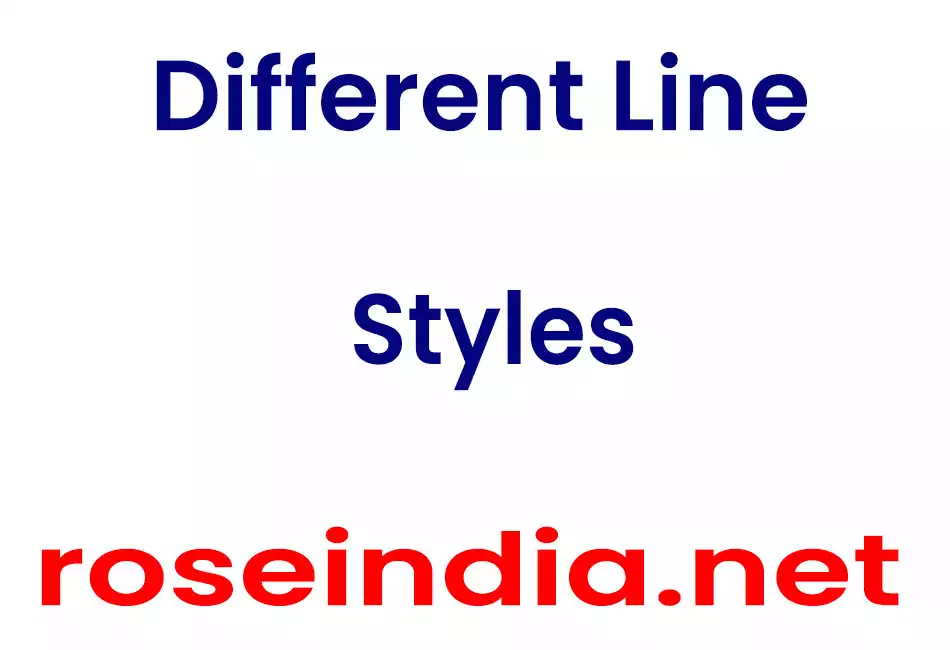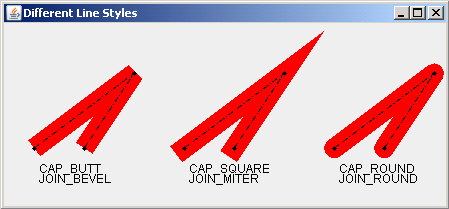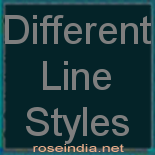To show different styles of line, we have used BasicStroke class. The class BasicStroke provides several line drawing attributes: the line width, the dash pattern, the end cap style for the line, and the join style for the line.

Different Line Styles
This section shows you different styles of Line.
To show different styles of line, we have used BasicStroke class. The class BasicStroke provides several line drawing attributes: the line width, the dash pattern, the end cap style for the line, and the join style for the line.
We have defined three different line styles. These are the thick lines having different cap and join styles.
Following are the cap styles:
| 1)
The BasicStroke.CAP_BUTT specifies that the line have no end cap. 2) The CAP_SQUARE specifies a rectangular end cap, and 3) The CAP_ROUND draws end cap in a semicircular shape. |
Following are the join styles:
| 1) BasicStroke.JOIN_BEVEL connects the outer corners of their wide outlines with a straight segment. 2) BasicStroke.JOIN_MITER extends the outer edges of line until they meet. 3) BasicStroke.JOIN_ROUND rounding off the corner of a line at a radius of half the line width. |
The class GeneralPath defines the path for the different styles of line. The setStroke() method sets the settings of the strokes of line used when drawing shapes into the image. To control the stroke width, color, miter limit, dashing settings, end cap style and line join style, setStroke() method is used.
Here is the code of DifferentLineStyles.java
|
import java.awt.*; import javax.swing.*; import java.awt.event.*; import java.awt.geom.GeneralPath; public class DifferentLineStyles extends JPanel{ public String getName() { return "Lines"; } int[] x = new int[] { 50, 100 , 0 }; int[] y = new int[] { 75, 0, 75 }; Stroke[] stroke1 = new Stroke[] { new BasicStroke(20.0f, BasicStroke.CAP_BUTT, BasicStroke.JOIN_BEVEL), new BasicStroke(20.0f, BasicStroke.CAP_SQUARE,BasicStroke.JOIN_MITER), new BasicStroke(20.0f, BasicStroke.CAP_ROUND,BasicStroke.JOIN_ROUND), }; Stroke stroke2 = new BasicStroke(1.0f,BasicStroke.CAP_BUTT,BasicStroke. JOIN_BEVEL,1.0f, new float[]{ 6.0f, 2.0f, 1.0f, 2.0f },0.0f); Font font = new Font("Book Antiqua", Font.BOLD, 15); String[] caps = new String[]{ "CAP_BUTT", "CAP_SQUARE", "CAP_ROUND" }; String[] joins = new String[]{ "JOIN_BEVEL", "JOIN_MITER","JOIN_ROUND" }; public void paint(Graphics g){ Graphics2D g2d = (Graphics2D) g; GeneralPath path = new GeneralPath(); path.moveTo(x[0], y[0]); path.lineTo(x[1], y[1]); path.lineTo(x[2], y[2]); g2d.translate(30, 50); for (int k = 0; k < stroke1.length; k++) { g2d.setColor(Color.red); g2d.setStroke(stroke1[k]); g2d.draw(path); g2d.setColor(Color.black); g2d.setStroke(stroke2); g2d.draw(path); g2d.drawString(caps[k], 6, 100); g2d.drawString(joins[k], 6, 110); g2d.translate(150, 0); } } public static void main(String[] args){ JFrame frame = new JFrame("Different Line Styles"); frame.setContentPane(new DifferentLineStyles()); frame.setSize(450,210); frame.setVisible(true); } } |
Output will be displayed as:




